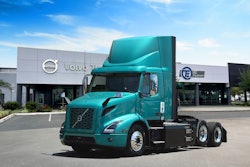I am constantly amazed at how various alternative power groups feel they are being marginalized by media coverage of competitors’ technologies. Here is a hypothetical example to put this in perspective: it’s like a spaghetti manufacturer claiming that biased media coverage of peanut butter sandwiches is overlooking the obvious benefits of a pasta meal.
Part of this is marketing. Playing your technology out as some maligned, forgotten underdog may strike some sympathetic chord with a marketplace. Or, quite frankly, it may highlight that the technology is just not getting the air time that you want and you can’t seem to break into the big leagues on news coverage. Or, it could be that you are just reading what you know and not doing proper random sampling of all the news that’s out there. The latter falls under the definition of bias.
A quick web search can help classify multiple types of biases. One example website is the National School of Healthcare Science out of England, which can get you started with a proposed list of 10 bias types. I suggest a new category: technology bias, loosely combining confirmation bias, conformity bias, and attribution bias to help describe why companies feel persecuted or marginalized by coverage of competing technologies.
I have worked on and written on a range of technologies over my more than 40-year career. Much of it is publicly available. Still, I run into this association, or that partnership, that sincerely feel that their technology is not being covered while someone else’s is being lauded with coverage. A natural gas group will feel that electric vehicles are getting disproportionate attention. A hydrogen gas group will state that natural gas or electric are getting too much coverage. A propane advocacy group will feel that they’ve been excluded from the discussion. An overhead catenary electric power advocacy group will feel that battery electric vehicles are blinding coverage of their technology.
It’s challenging writing a report focused on one technology fully knowing that advocates of 12 other technologies will feel they have somehow been excluded. This is especially difficult to grasp in this modern information-rich world where your smartphone can connect you with thousands of like-minded reporting at the speed of light.
Take the coverage of the U.S. Department of Energy’s various positions on future energy. I spend a lot of time web-surfing DOE; they are an excellent resource for analytical reports and also general overviews. However, the organization is like a hydra, that multi-headed mythical beast. Each head staunchly represents variously nuclear power, hydrogen, battery electric vehicles, wind power, solar power, geothermal power, hydro power, natural gas, propane, fusion power, you name it. It’s like standing at the equivalent of the Subway sandwich deli line and you can have anything you want, or combinations of them all. Governments are funding a smorgasbord of competing technologies.
Every category seems to have vested interests rabidly seeking money and authority, and each of them is fighting the others like a farrow of piglets scrambling to suckle. That analogy is at the heart of the matter. All the piglets have potential. The ones that fight harder may be more successful in a Darwinian survival of the fittest perspective. The ones that sit back and complain that they aren’t getting any milk likely won’t get much.
Media coverage is complex and illogical. A single headline that drops the name “Tesla” or “Musk” immediately trends irrespective of the content. It’s like putting a sign for “free beer” outside of an event to encourage attendance.
Therein may be the solution to perceived technology bias by advocacy groups. Just find out what key words are attracting the greatest media coverage and then shamelessly drop them in press releases, interviews and panels. Or better yet, be true to your potential, focus your efforts on making your technology the best and most cost effective it can be, and work on the long game to be one of the survivors in the media pigsty.










